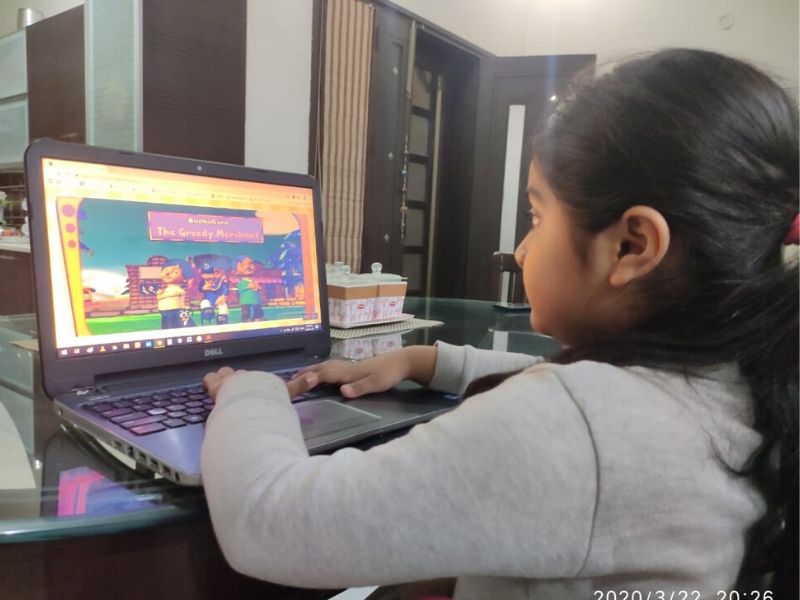By -Kiran Meena, Co-Founder & Head of ParentsnKids, SchoolMyKids.com
In the ever-changing technological landscape, the internet has seamlessly woven itself into the very fabric of children’s lives, offering an expansive realm of possibilities for learning and social engagement. This digital realm, while brimming with opportunities, also presents potential pitfalls, most notably the menacing specter of cyberbullying.
As a society accountable for the well-being of our youth, it becomes paramount to furnish them with comprehensive internet safety education, empowering them with the tools to confront cyberbullying head-on. By bestowing upon them the knowledge and vital skills necessary, we can
forge an unyielding bastion of security, cultivating a sanctuary where our young ones can flourish in this dynamic digital era.
With the pervasive influence of the internet, children have come to realize the importance of gadgets. However, it’s essential to acknowledge that they can inadvertently fall into online scams and harmful content, such as explicit material, addictive games, or misinformation. To safeguard them, early internet safety education should prioritize lessons on privacy, responsible use of personal information, and the significance of creating strong passwords. By doing so, we can effectively counter these risks and ensure a safer online experience for our
children.
Cyberbullying refers to the act of using digital communication tools, such as social media, emails, or instant messaging, to harass, threaten, or humiliate others. Unlike traditional bullying, cyberbullying can take place anytime and anywhere, making it challenging for children to escape its reach. The consequences of cyberbullying can be severe, leading to emotional distress, social isolation, and even long-term psychological effects.
Globally, the internet’s integration with children’s lives is widespread, with over 4.9 billion users worldwide in 2021. Cyberbullying is a universal concern, leading to international organizations like UNICEF and UNESCO advocating for internet safety education. Countries are implementing measures to create a safer digital environment through parental involvement and educational initiatives.
In India, the internet has become integral to children’s lives, with over 450 million users under 18 as of 2021. While it brings opportunities, it also poses risks like cyberbullying and exposure to harmful content. The Indian government and NGOs are focused on internet safety education to promote responsible online behavior among children.
As children venture into the virtual realm, it is essential to make them aware of the potential risks and dangers they may encounter. Internet safety education should start early before children gain their first digital devices. Parents and educators must teach them about the importance of privacy, the responsible use of personal information, and the significance of strong, unique passwords.
By promoting awareness about cyberbullying, parents and educators can empower children to recognize and address such behavior. Open discussions about real-life cyberbullying cases can help children understand the impact of their actions and encourage empathy and kindness.
Two main roles that shape children’s behavior:
Schools play a vital role in shaping children’s understanding of the digital world. Integrating internet safety and cyberbullying awareness into the curriculum can have a lasting impact on students’ online behavior. Interactive workshops, role-playing exercises, and case studies can make the learning experience engaging and relatable. Educational initiatives should cover topics like safeguarding personal information,
recognizing and reporting cyberbullying incidents, and understanding the consequences of inappropriate online behavior.
Parents are crucial caregivers and influencers in their children’s lives. Parents’ active involvement cultivates responsible online behavior, equips children to identify cyberbullying, and fosters trust, encouraging them to seek guidance when necessary. Empowered by this support, children navigate the digital world confidently, effectively coping with cyberbullying challenges.
Schools should involve parents in internet safety initiatives through workshops and seminars to educate them about the digital challenges their children may face.
A collaborative effort will ensure a consistent message about internet safety at home and in school.
Ways to secure children online :
- Monitor online activities: Keep an eye on what your children do online to ensure their safety and identify any potential risks or cyberbullying.
- Set time limits: Establish reasonable screen time boundaries to promote a healthy balance between online and offline activities.
- Introduce age-appropriate websites: Direct children towards suitable online content that aligns with their age and interests.
- Limit social media use in front of children: Be a positive role model by moderating your social media usage around kids.
- Emphasize password protection and online security: Teach children the importance of strong passwords and encourage open communication about online scams and safety to keep them safe online.
In cases of cyberbullying, it’s crucial to take the right measures. Seek cybersecurity help and report incidents through government portals such as the National Cyber Crime Reporting portal, Cyber Swacchta Kendra, etc.
Teaching children to be responsible digital citizens is vital in combating cyberbullying. Promoting empathy and respect online can foster a greater sense of responsibility for their actions. Encouraging children to think twice before engaging in hurtful online behavior empowers them to use the internet responsibly.
Remember, internet safety and cyberbullying education is an ongoing process. By empowering children with knowledge, critical thinking skills, and digital literacy, we can create a safe and responsible online community for the next generation. Parents, educators, and policymakers must collaborate to nurture digital citizenship and encourage positive online behavior. As we continue to evolve in the digital landscape, safeguarding our children’s safety and well-being remains a top priority.
Also read: Advice for dealing with cyberbullying in your school
